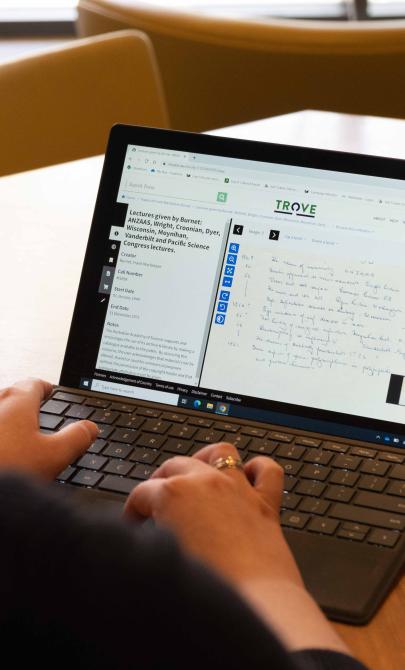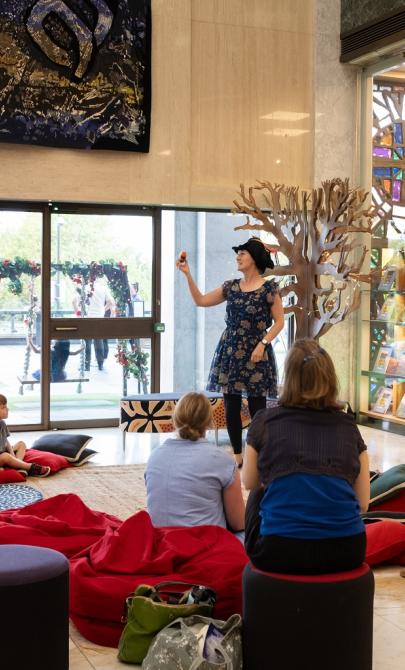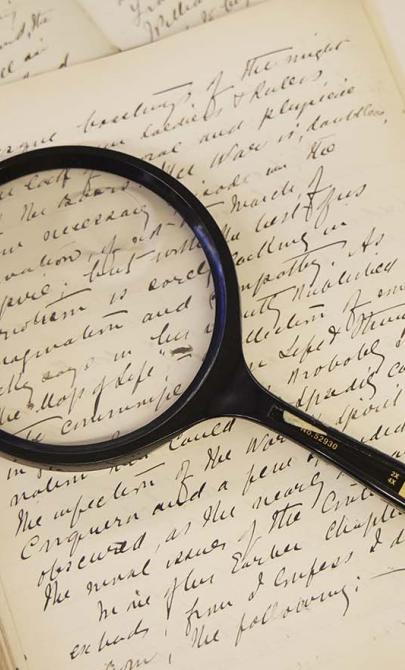Defining literacies
The meaning of literacy
According to the Macquarie Dictionary, literacy has 4 meanings:
Noun
- the ability to read and write.
- the ability to use a language effectively.
- (plural literacies) The ability to comprehend communication and express oneself in a specified field (for example, political literacy, arts literacy).
- the ability to use digitally based communications technology (for example, computer literacy, multimedia literacy).
Broadly, "literacy" on its own usually refers to the ability to read, write and communicate effectively (meanings 1 and 2). When paired with another word, such as French literacy or sport literacy, it refers to understanding and interacting within that topic or field (meaning 3). The fourth meaning relates closely to digital literacy.
Media, information and digital literacy are all forms of literacy. At their core, they describe a person's ability to locate, create, use and critically engage with information in a range of formats. While they overlap, each has unique characteristics depending on the type of information, how it's presented and who is sharing it.

N.S.W. Teachers' Federation & New South Wales Public School Teachers' Federation. (1919). LITERACY: FACT and FICTION, Education : journal of the N.S.W. Public School Teachers Federation, nla.gov.au/nla.obj-710682297
N.S.W. Teachers' Federation & New South Wales Public School Teachers' Federation. (1919). LITERACY: FACT and FICTION, Education : journal of the N.S.W. Public School Teachers Federation, nla.gov.au/nla.obj-710682297
The definition of media literacy (with Michelle Ciulla Lipkin)
Media Literacy Basics Bias & Agenda - What Is Media Literacy
Media Literacy Basics Bias & Agenda - What Is Media Literacy 2
How literacies interact and co-exist (with Michelle Ciulla Lipkin)
Media Literacy Basics Bias & Agenda - Intersecting Literacies
Information literacy
Information literacy is the ability to:
- recognise when information is needed
- know how and where to find relevant information
- evaluate information for accuracy and bias
- use information correctly
- create new information in ways that achieve a goal and respect the original sources.
'Information' in this context is broad. It includes anything from which knowledge can be gained—books, photographs, videos, websites, songs, sculptures, people and more.
Media literacy
Media literacy builds on the principles of information literacy. It involves the skills needed to access and analyse media content—regardless of the format—to understand its purpose, accuracy and reliability, and to act on this understanding.
In Australia, people consume news and media across many formats: newspapers, magazines, podcasts, TV, radio, billboards and social media. Globally, the 24/7 news cycle means information is delivered in real time, often with little verification. This can lead to speculation, inaccuracies and misinformation spreading as fact.
The 24/7 news cycle and how we can become better at evaluating the information it presents (with Gavin Sundwall and Michelle Ciulla Lipkin)
Media Literacy Basics Bias & Agenda - 24 Hour News Cycle
The Australian Media Literacy Alliance defines media literacy as "the ability to create, use and share media and to critically reflect on this engagement." It includes the ability to:
- assess media content for bias and accuracy
- distinguish fact from opinion
- spot misinformation
- evaluate the credibility of sources.
News shared through social media and techniques used to influence viewers (with Michelle Ciulla Lipkin)
Media Literacy Basics Bias & Agenda - Social Media Influence
Digital literacy
Digital literacy shares similarities with media and information literacy, but it extends further. It includes the ability to engage safely, responsibly and effectively in a digital environment.
Australians consume large amounts of digital information daily. The ACCC's Australian Competition and Consumer Commission's Internet Activity Report (31 Dec 2021 to 30 June 2022) found:
- 7.5 million NBN household connections
- an average of 436 GB downloaded per month (NBN and non-NBN)
- mobile users averaged 10.3 GB of data per month.
Digital literacy involves understanding that digital content—whether through apps, websites, social media or messaging—can be created, edited and shared by anyone. This opens the door to rapid spread of misinformation before it can be removed or flagged.
Strong digital literacy skills help users to:
- identify manipulated or AI-generated content (such as edited images or filtered videos)
- engage positively and respectfully online
- call out misinformation and inappropriate content
- protect their digital identity and data
This includes knowing how to:
- spot phishing or scam messages
- manage passwords and accounts securely
- understand how personal data is collected and used
- find help and support when problems occur online.
For people who didn't grow up with digital technology—particularly older generations—these skills can be challenging to learn but are increasingly essential.
Pros and cons of social media (with Gavin Sundwall and Michelle Ciulla Lipkin)
Media Literacy Basics Bias & Agenda - Pros And Cons Of Social Media



